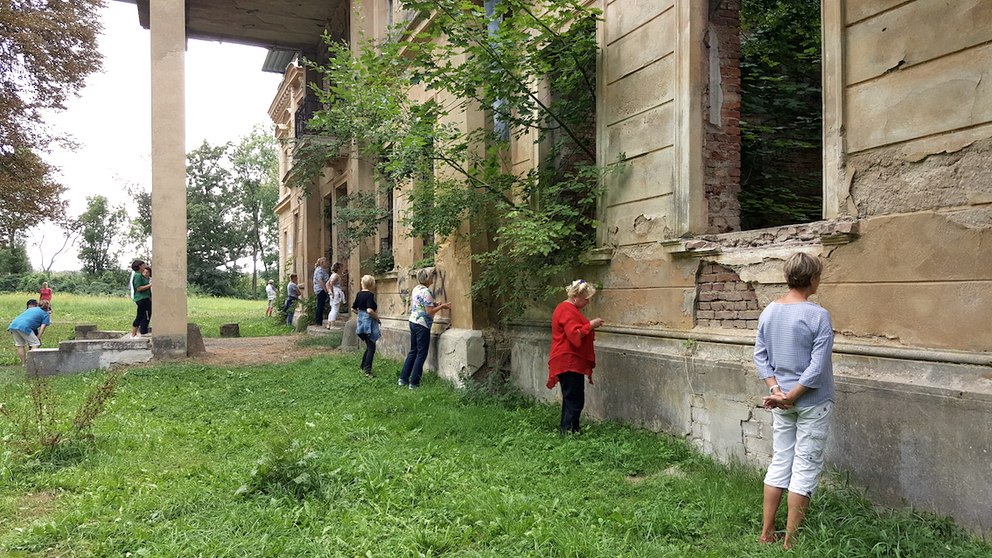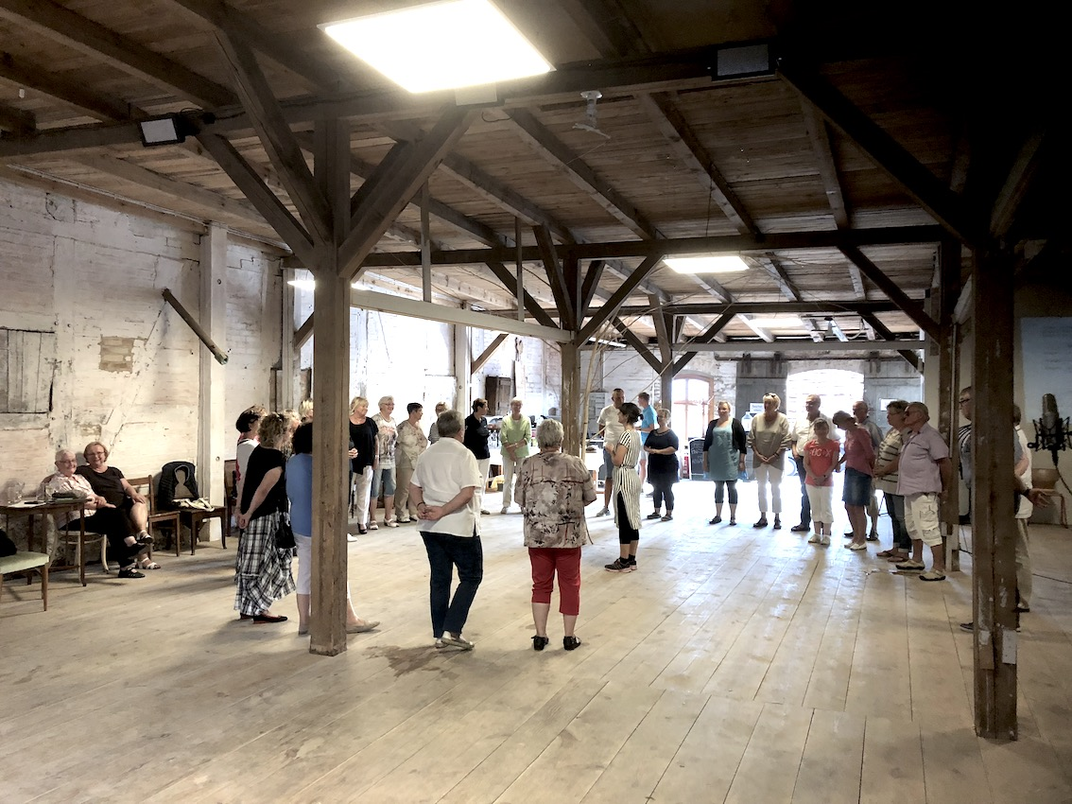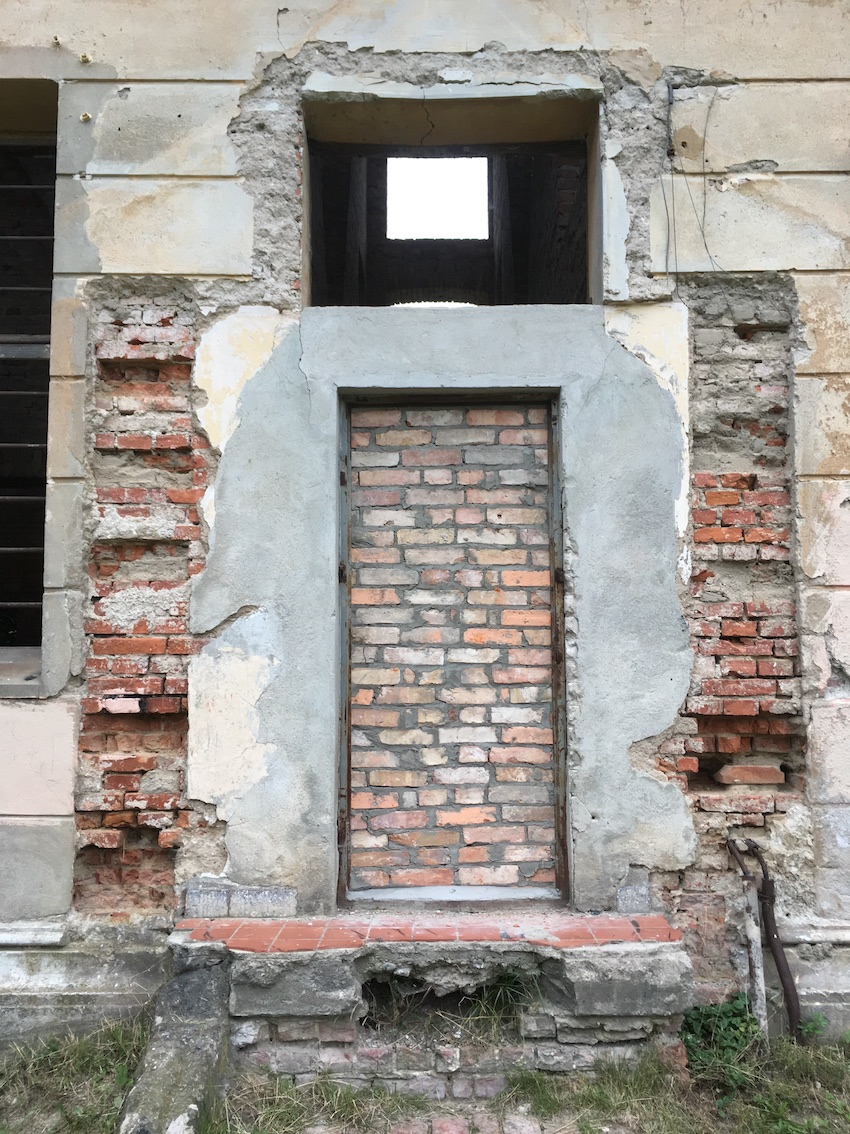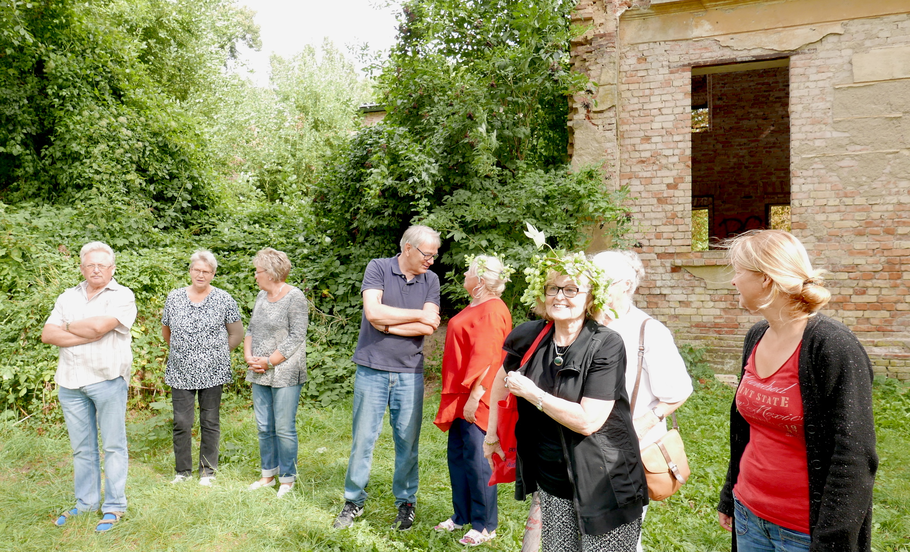The workshop with the Peenechor started in August 2018 in the former granary Lübecker Speicher run by the Speicherverein e.V.. After presenting myself and explaining the project as we sat in a big circle, I asked everyone to name a song they remembered from their childhood. The participants had the option of sharing what the song meant to them. After a break with snacks, drinks and casual conversations we ended our first evening together with a sounding exercise. Two singers shared a tone and were asked to slowly move apart from one another. In doing so they were encouraged to care for the whole space by making sure that none of it was without voice. At the same time, they were to remain connected to their 'tone partner'. This exercise encourages one to listen to the other, to listen to the sound that is produced, and it creates an awareness of what happens in the space while the voice moves around within it. It is an exercise in focused listening with respect to one's tone partner, and is simultaneously an exercise in broader listening for the whole group. The tones floated in the space and created a web of voices. The singers enjoyed moving within this web whilst also being part of its
creation.
During the first days on site we walked around the buildings and collected different memories of the place together. Through their stories the participants let trees, paths and buildings that were no longer there appear in my mind's eye. Their stories thereby inspired several of the voice exercises that would
follow.
Gatherings with food and drinks were an important part of this project. We often sat together between different moments of the workshop and shared home-made cake and fresh fruits. We shared time and space and stories. The sharing of stories continued throughout the two weeks in various forms. With time the participants understood that the project grew from within, through them. Sometimes singers would bring books from their private libraries, when they thought that these were relevant. Some brought images of Haus Demmin that they or their family members had saved. For example, one participant shared an image of the tower before it was walled in. This photo shows a ruin with a small open window, taken back by nature. It reminded me of the paintings of Romanticism. Surprisingly, in the archives I had not found any similar images of the
tower.
The structure of the workshop invited the singers to register for one of three slots every day of the workshop, 5 days a week. This ensured that everyone was able to make it to one of the rehearsals each day. Another advantage to this was that the group constellations changed all the time, and experiments with three people gave different parameters to explore than if 15 people were present. The Haus Demmin estate was then explored with the voices of the members of the choir through exercises in the open
air.
In 2017, one year before the workshop, I visited Demmin for the first time. During the two weeks that I spent exploring the city I visited memorable places, had conversations with locals, got access to archives and read books on the city's well-documented history.
The conversations that I had with the elderly people of Demmin made it especially evident that this city is filled with interesting stories. As shocked as I was about the many unbelievable and heart-breaking stories connected to the horrible mass suicide in 1945, I soon felt that if this continued to be the only story that is told about Demmin it will hinder the people who live there from moving on.
I learned about other histories that quietly permeated the cracks of the fixed historical narrative of the Demmin trauma, and I wanted to empower these stories. When deciding on a site for the project, I therefore chose a location that itself had a long history but which had gradually fallen silent, as if oblivious:
Haus Demmin.
The guiding idea became to let this site sound. This would be done through shared memories, singing together on site and giving the place presence through our presence. The inaccessibility of the buildings generated curiosity. It stimulated questions: Which sounds would we be able to elicit from the remaining architecture? How can voice transgress the boundaries that are put on our bodies?
Workshop 2018
The participants in the 2018 workshop Demmin – letting a city sound were members of the mixed choir Peenechor Demmin e.V. It is an inclusive choir for anyone that wants to sing. Currently the choir has 56 members. Since 2009 Matthias Wieczorek has been its leader. They perform mainly in Demmin and the surrounding area. In this project between 35 and 40 members of the choir participated. Most of them were over 65 years
old.
Exercise examples
- Listening: I started the first day on site with a listening exercise with each group. Each participant would walk alone and collect sound information from the site. Afterwards we walked together and shared sounds we had discovered. When working site-specifically with sound and voices it is important to get familiar with the sounds that already exist. Especially in the open air it is impossible to control the sonic environment. Therefore, it is crucial to pay attention to the surrounding sound environment and get acquainted with its ambience. This living soundscape fascinates me and I find it interesting to explore how we can work with it creatively and
inclusively.
- Exploring the site with one's own voice: At the former mansion we explored the inside of the house by sending our voices through the open windows into the space. For this we collected bricks lying around the house and stacked them up until we could comfortably stand on top of the bricks and lean into the space, to listen into the space and make sound there. As exercises we would, for example, explore how the mode of sound production would influence the way the sound moved in the space. By changing the shape of the mouth or the position of the vocal resonance inside of the body the sound travelled differently into and through the space. Then we would examine how we could reach certain parts of the inside of the building with our voices in order to consciously use acoustic scattering or
reflection.
- Games: One game we played was developed from a collection of words that the participants associated with Haus Demmin. Instead of the 'whisper down the lane game', also known as 'Chinese whispers' or in German 'Stille Post' , I decided to carry out a 'sending the words far and clearly down the lane game'. Instead of whispering so that the others cannot hear it, the challenge is to send the words as clearly and far as possible. The person next in line should be able to “catch” the word and pass it on to the next person. The participants could adjust the distance between each other according to their hearing abilities and the strength of their voice. When we used compound words for this exercise, new words and surprising associations derived. This game developed during the workshop and became later a part of the
sharing.
- Task-based compositions: In one example the singers used consonants when they collaborated with the sound environment in a defined area on site. The task was to relate both to the sounds of the surroundings and the sounds created by the other singers. Teaming up with different sound creators was suggested, so as to form clear patterns. When one sound pattern was no longer interesting for a singer, s/he could move around the area until inspired to join in somewhere else. For some singers it helped them to think of "stations" and "connections" when wondering about their role. When the singers found the unvoiced consonants too difficult to hear, the consonants could be combined with vowels. One additional value I see in these exercises is the raised awareness of and contact with one’s body. Choir singers often stand for a long period and mainly focus on their voice. To involve the whole body in the sound creation, sound distribution and the spatial composition can give more appreciation of the body that creates and carries the sound. The same body is the carrier of
memories.
Continue to
Reflection and Acknowledgements
Back to




